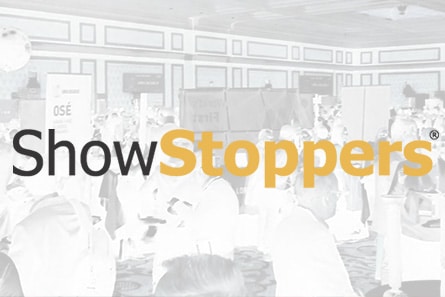
Singapore’s activewear scene began to sprout in the mid-2010s, riding on the global fitness boom and the rise of boutique gyms, yoga studios, and lifestyle wellness trends.
Besides well-known global brands like Adidas and Lululemon, local brands emerged, offering stylish and functional apparel that catered specifically to Asian needs, such as body type and modesty.
However, Singapore’s business landscape has only become more challenging, especially since the COVID-19 pandemic. Grappling with rising operational costs, persistent manpower shortages, evolving consumer behaviors, and global economic uncertainties, companies have found survival far from easy.
In fact, the total number of companies forced into compulsory liquidation (court-ordered closures due to debt) reached 187 in the first half of 2025—a five-year high for that period. And last year, Singapore saw a 15-year record high, with 307 compulsory liquidations for the entire year.
Local activewear brands have not been spared, either. Several, including APHY and Flow Funkie Studios, have folded in 2025, while even international names like Sweaty Betty closed both its Singapore outlets this year.
For the homegrown brands that remain, survival meant adaptability and changing the way they operated.
We spoke to several local labels to understand how they are navigating Singapore’s high-cost environment, shifting consumer habits, and competitive pressures—and what it takes to stay relevant in a market that is as demanding as it is vibrant.
1. Vivre Activewear

For some brands, downsizing was seen as the right move to keep business sustainable.
Founded in 2014, Vivre Activewear entered the scene with a promise: high-quality yoga wear at accessible prices. Early success saw daily online sales of around S$1,000 and the opening of its first outlet at Far East Plaza.
At its peak, Vivre operated six outlets and achieved annual net revenues of S$1.9 million in 2020 and 2021. But the pandemic years brought a surge of competitors, particularly online-only brands offering “massive discounts” to gain market share. This, co-founder Sylvia Lim explained, “changed customer expectations regarding pricing.”
With rental and manpower costs averaging S$30,000 per store, maintaining physical outlets became impractical. Stores that once earned five-digit profits were soon barely breaking even.
By 2024, Vivre shuttered all physical outlets. Operating solely online allowed the brand to “right-size” the business, keep annual revenue below S$1 million, deregister GST, and improve profitability through leaner e-commerce operations.
“At this stage, we don’t expect to see revenue growth as we aim to remain small and agile while focusing on profitability,” said Sylvia.
2. Outfyt

Another brand that had to face the consequences of shifting consumer habits was Outfyt.
Established in 2016, the brand is known for minimal, stylish activewear crafted from recycled nylon and polyester sourced from rescued fishing nets, carpet fluff, and industrial plastic waste—a deliberate move by founder Stephanie Colhag Yeo to promote slow fashion.
Outfyt started as an online store before opening a boutique along Haji Lane in 2017. As a relatively new brand at the time, Stephanie shared that having a physical store would allow the local community to experience Outfyt’s apparel in person. The brand also hoped to reach an international audience, as the location was popular with tourists.
However, in mid-2025, Outfyt returned to an online-first model to adapt to post-pandemic shopping habits. Over the years, Stephanie observed that customers increasingly preferred browsing and trying items at home.
Shoppers have also become more conscious about their purchases, choosing sustainable and ethically made clothing.
This aligns well with Outfyt’s sustainability focus, but it also adds another layer of cost on top of Singapore’s already high operating expenses. The main challenge, Stephanie noted, is balancing quality, ethics, and affordability without compromising the brand’s core values.
That said, keeping operations online has proven to be sustainable so far, though the brand still hosts pop-ups occasionally to let customers experience its fabrics firsthand.
3. GLOWco

Other brands have gotten creative and adopted other strategic initiatives to navigating Singapore’s activewear market.
Founded in 2019, modest activewear brand GLOWco has a physical presence, but it gets to keep costs low by running a store in a non-mall edutainment building, Yo:Ha Commercial at Tampines. The space also doubles as a fitness studio, providing an additional revenue stream to sustain the brand’s operations.
Initially an online brand, GLOWco moved into the space in 2021. By day, customers can visit its retail store by appointment to feel fabrics, confirm sizes, and receive personalised styling guidance—allowing the brand to manage foot traffic and enhance the customer experience.
By night, it transforms into GLOWco Move, a women-only fitness studio offering classes such as pilates and yoga from S$90/month. The brand also hosts pop-ups at events and sessions at the studio to strengthen community engagement with GLOWco.
In addition to its physical store, GLOWco has expanded its presence through consignment placements and e-commerce platforms. Its pieces are available in Decathlon stores in both Singapore and Malaysia, and the brand has also reached customers through online marketplaces like Lazada and Shopee.
4. cheak

cheak, on the other hand, has adopted a more cautious approach towards scaling up.
Formerly known as butter., cheak was founded in 2020 and was acquired by Love, Bonito two years later. It has since grown to become a recognised activewear brand for Asian women.
The brand has been deliberate about expansion, taking five years to open its first standalone boutique at ION Orchard in Oct 2025. “Every decision we make takes a lot of consideration in how we can scale cheak meaningfully,” said co-founder Olivia Yiong.
Previously, Cheak operated mainly online and sold select pieces in Love, Bonito’s regional stores to test the waters. With the ION Orchard store, the brand hopes to expand its customer base. While its current audience is mostly younger shoppers, the new location aims to attract tourists and an older demographic.
cheak also intends to expand into Malaysia. As part of this strategy, it launched a pop-up at APW Bangsar in September to gauge demand. The brand has also collaborated with Malaysian gym GoodJuju on limited-edition pieces, which will be sold both at cheak and the gym.
With its physical expansion, the brand projects a 1.4 times growth compared to last year by letting local shoppers experience their full collection in person.
Surviving the tough business climate
These Singaporean activewear brands show that agility and adaptability are key to surviving the tough business climate.
Whether downsizing to e-commerce, pivoting to hybrid models, or taking a measured approach to brick-and-mortar expansion, they demonstrate that long-term sustainability and growth depends on continuously adapting to market changes, while also carving a space for themselves in an increasingly saturated market, competing with global and local brands alike.
- Read more stories we’ve written on Singaporean businesses here.
Also Read: 80% of S’pore F&B businesses are losing money. The “lucky” ones only make 5 to 7% profits.
Featured Image Credit: Vivre Activewear, Outfyt, GLOWco, cheak
Last modified: November 7, 2025







